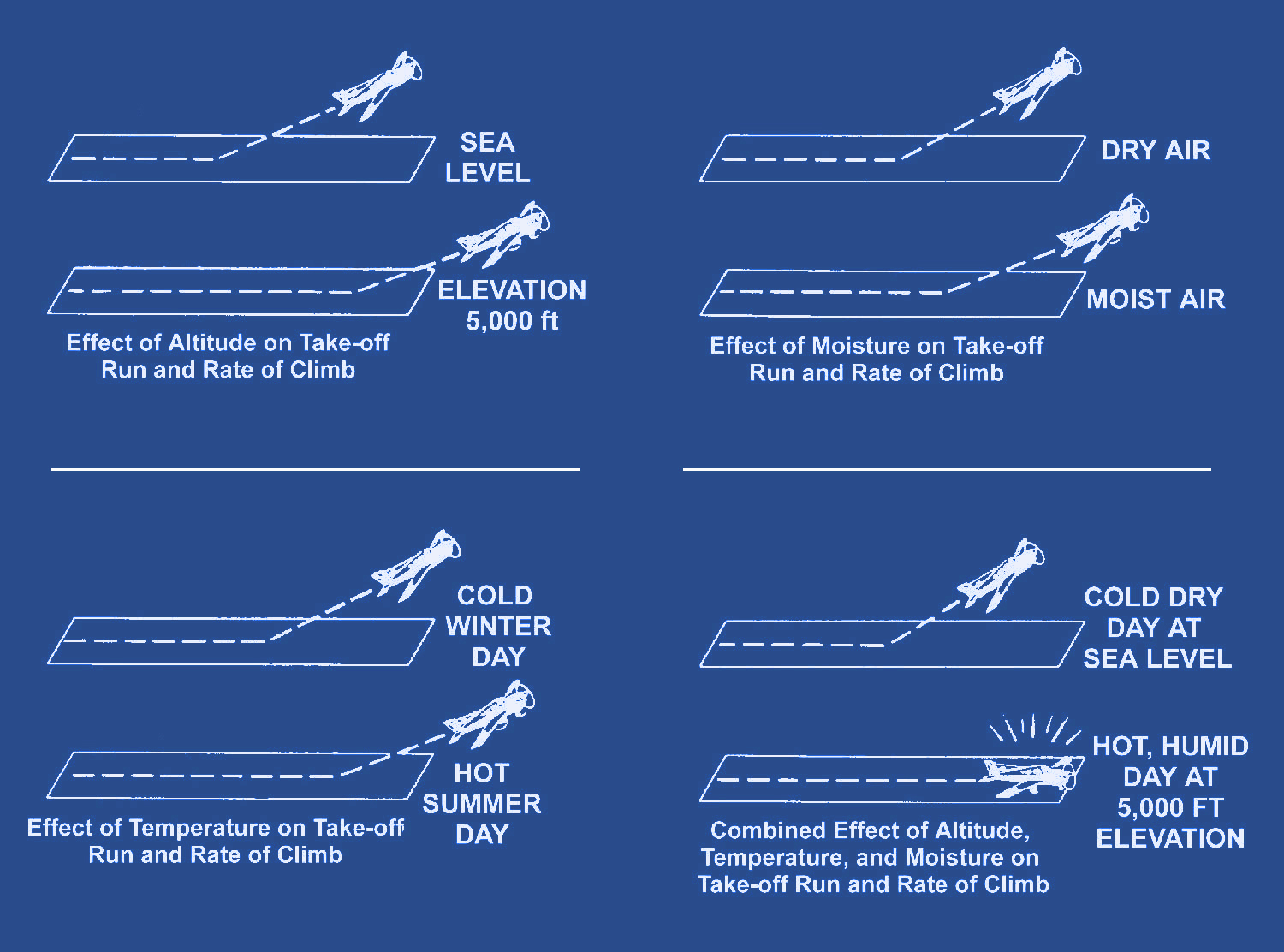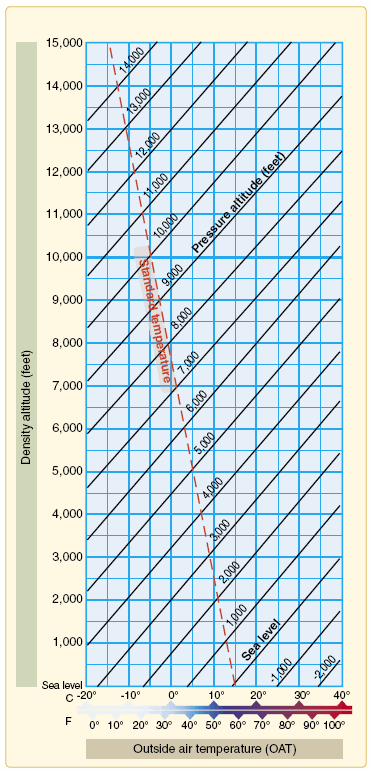By: Steven Daun, National Chief Pilot
Last year around this time, as it happens every year, we read about the airlines canceling flights in Phoenix, Arizona. The public is still amazed each year as the headlines read 119° F and these marvelous multi-million dollar jets are reduced to nothing more than glorified extensions of the terminal seating areas.
Inevitably there is a pilot somewhere in a group discussing this phenomenon and the term “density altitude” is voiced. People shake their heads as if to say, “Oh yeah, that thing,” and then they go on reading and listening to their music without thinking twice about why they are being held back.
About 10 miles away an excited student pilot shows up at the airport for a much-anticipated lesson only to be told that they aren’t going to fly because of the “density altitude.” The instructor expanding on this statement continues to explain that density altitude is the pressure altitude adjusted for nonstandard temperature. And that is usually where the conversation ends.
There is much more to density altitude than just that simple summation. As we are moving into the heart of the summer months, it only seems appropriate to discuss the “why’s” of density altitude. However, we must first identify several components that makeup density altitude. These are:
- AIR: Air is actually a mixture of gasses such as 78% Nitrogen, 21% Oxygen, and 1% water vapor and a few other gasses like carbon dioxide and argon.
- Static Pressure: We know from our studies that at standard sea level the static pressure is 29.92in. HG., and decreases as we increase our altitude.
- Temperature: Standard sea-level temperature is 15°C or 59°F. This too decreases with altitude.
- Density: Webster’s defines density as “a measure of the compactness of a substance, expressed as its mass per unit volume. It is measured in kilograms per cubic meter or pounds per cubic foot.” To put this in simpler terms, we can say density is the number of air molecules that are contained in a specific volume of air.
- Viscosity: Viscosity is a physical property of all fluids which enables us to measure the resistance of the fluid to flow. Water has a low viscosity because it is thin and has a low resistance to flow. Engine oil, on the other hand, has a higher viscosity because it is thicker and has a higher resistance to flow. The same principles apply to air. There are two types of viscosity that affect density altitude. These are absolute viscosity and kinematic viscosity.
- Shear Rate: Shear rate is the rate of change of velocity as one fluid passes over an adjacent layer.
 So now that we have discussed all of the components that make up density altitude let’s take a look at how they come together to affect our airplane.
So now that we have discussed all of the components that make up density altitude let’s take a look at how they come together to affect our airplane.
Sea level air density is approximately 70% – 75% higher than density at 35,000 or 40,000 feet. This should make sense to you because the air is thinner at higher altitudes. This means that the air molecules are farther apart than they are at sea level. When we consider temperature we find that colder air is denser than warmer air. However, as our altitude increases air density decreases. This decrease is somewhat offset by the colder air temperatures found at higher altitudes.
We discussed air viscosity as the resistance of fluids to flow. Viscosity increases as temperature increases. Viscosity also decreases as temperature decreases. Absolute viscosity is the amount of force that it takes to make the air move. But that only tells part of the story. We need to also consider the effects of pressure on the flow of air. Kinematic viscosity is Absolute viscosity adjusted for pressure.
So far we have discussed air density and the effects of temperature on air density. We have also discussed the viscosity of an air mass which determines the ability of the air mass to flow.
 Now we need to take a look at what happens when that air mass encounters a wing and the rest of the aircraft. This is referred to as the shear rate which means that the flow dynamics of the air mass remain the same, but the velocity of the air mass now decreases as it encounters the aircraft.
Now we need to take a look at what happens when that air mass encounters a wing and the rest of the aircraft. This is referred to as the shear rate which means that the flow dynamics of the air mass remain the same, but the velocity of the air mass now decreases as it encounters the aircraft.
When the outside air temperatures are extremely high, we can see that we not only have less dense air we also have a higher air mass viscosity which means the fluidity of the air mass slows down. Essentially this makes the air mass encountering the aircraft less effective in producing lift.
 When you are at sea level most of this phenomenon are minimal because you are starting out with a higher density air mass. However, as you move into higher airport elevations, you are starting out with a lower density air mass thus making the engine(s) and wings less effective.
When you are at sea level most of this phenomenon are minimal because you are starting out with a higher density air mass. However, as you move into higher airport elevations, you are starting out with a lower density air mass thus making the engine(s) and wings less effective.
So the next time you are contemplating flying when it is 119° F at your airport with an elevation of 4,000’, please think twice. Envision the reduced efficiency of the engine because of the higher air temperatures and lower air density. Take a look at the wings and think about the higher air viscosity encountering the wings, the lower effectiveness of the airfoil to fly.
When you tie all of this together, you are now able to calculate and understand the true effects of density altitude on your aircraft. You can now also begin to understand why those multi-million dollar airliners cannot take off in the middle of the summer at Phoenix.
Phoenix Sky Harbor Airport is 1,135’. If it is 100°F outside you can see that your density altitude is just above 4,000’.
Prescott Airport is 5,045’. If it is 100°F outside you can see that your density altitude is approximately 9,000’.
Leadville, Colorado airport is one of the highest airports in the U.S. It sits at an altitude of 9,934’. The hottest that this airport usually ever gets is 72°F. When you apply this to the graph, you will see that the density altitude is just over 13,000’.
If you have ever flown a normally aspirated aircraft at a higher altitude on a cross-country, you can begin to understand the effects that density altitude will have on your aircraft. At full throttle, you see a reduced amount of power being produced by the engine. If you try to climb, you see reduced climb performance.
So the next time you show up at the airport and say, “It’s a beautiful day, let’s load everyone into the airplane and go fly,” please stop yourself. Take a minute to calculate the density altitude and the effects that it will have on your flight. Then make the go/no-go decision.










